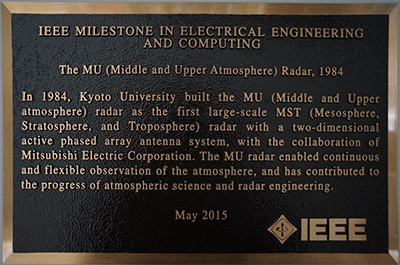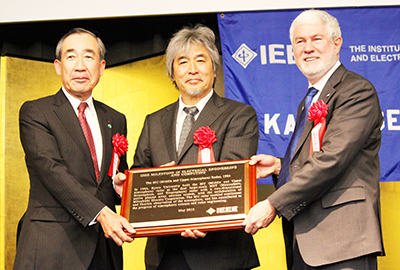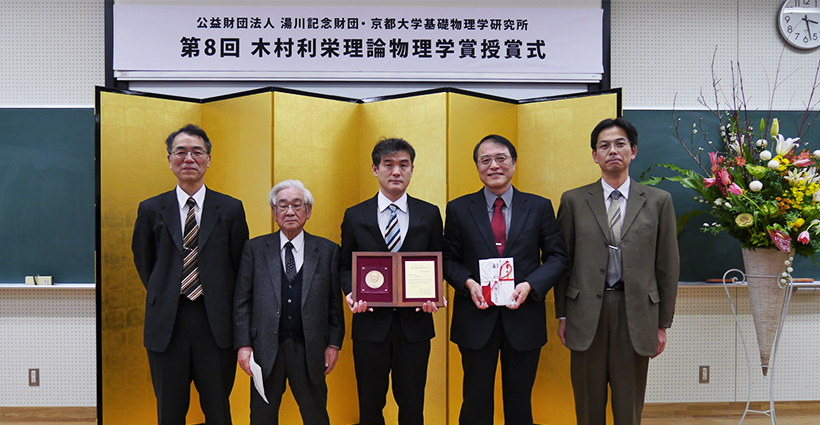The middle and upper atmosphere radar (MU radar) at Kyoto University's Research Institute for Sustainable Humanosphere (RISH) -- developed by Kyoto University in collaboration with Mitsubishi Electric Corporation and in use since 1984 -- has been presented with an IEEE Milestone by the Institute of Electrical and Electronic Engineers (IEEE), the world's largest academic society. The award recognizes the radar -- the world's first mesosphere, stratosphere, and troposphere (MST) radar with an active phased array antenna system -- for its significant contributions to atmospheric science and radar engineering.
The award ceremony took place on 13 May at Kyoto University's Shiran Kaikan, followed by a plaque dedication ceremony at RISH's Shigaraki MU Observatory in Shiga Prefecture.
Under computer control, the MU radar is capable of emitting an ultra-fast 400 µs scanning beam in all directions, enabling real-time monitoring of the upper atmosphere at an altitude of up to several hundred kilometers, making it thus one of the most powerful instruments of its kind in the world.
As a joint-use facility accessible to all universities and institutes in Japan, it has helped advance the fields of atmospheric science and radar technology by playing a role in numerous research achievements spanning a broad range of related disciplines, including aeronomy, meteorology, astronomy, electrical engineering, electronics, and astrophysics.
RISH's MU radar is the first KU-related project to have been awarded an IEEE Milestone.

The IEEE Milestone plaque

From left: Masaki Sakuyama, President & CEO of Mitsubishi Electric Corporation, KU President Juichi Yamagiwa, and IEEE President & CEO Howard E Michel

MU rader seen from above
About the Institute of Electrical and Electronic Engineers (IEEE) and the IEEE Milestones
IEEE was established in 1963 following the merger of the American Institute of Electrical Engineers (AIEE, founded in 1884) and the Institute of Radio Engineers (IRE, founded in 1912). It is headquartered in the USA, and covers the fields of electricity, electronics, information, and communications. As the world's largest academic society, it boasts a membership of over 420,000 from more than 190 countries (as of 2012), with 14,298 members based in Japan (as of November 2014).
The IEEE Milestones in Electrical Engineering and Computing program was instituted in 1983 to recognize significant innovations that occurred at least 25 years ago in the fields of technology covered by IEEE, and that have made major contributions to regional and industrial development.





